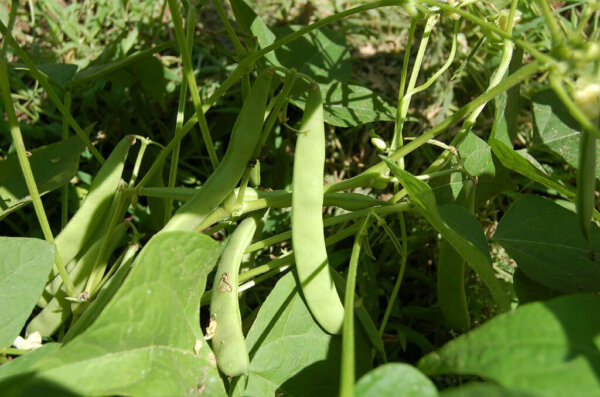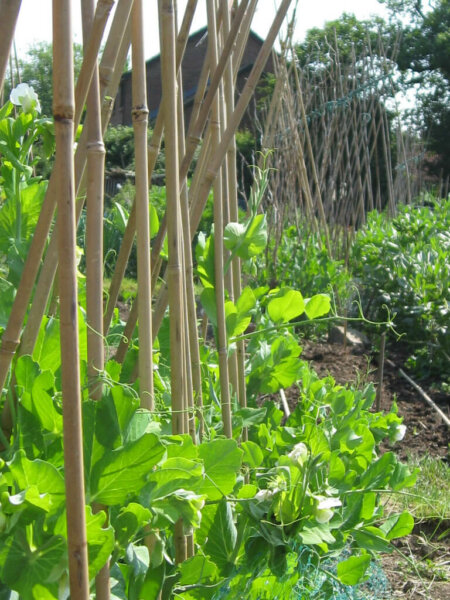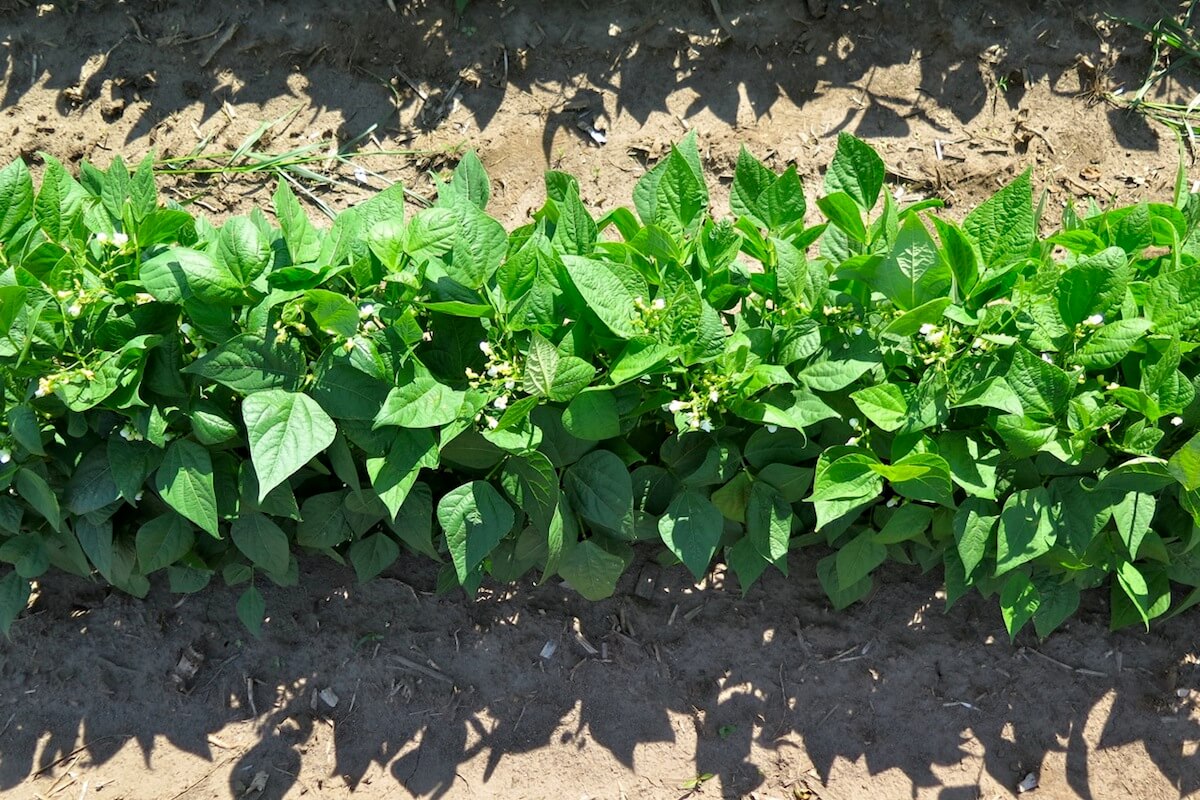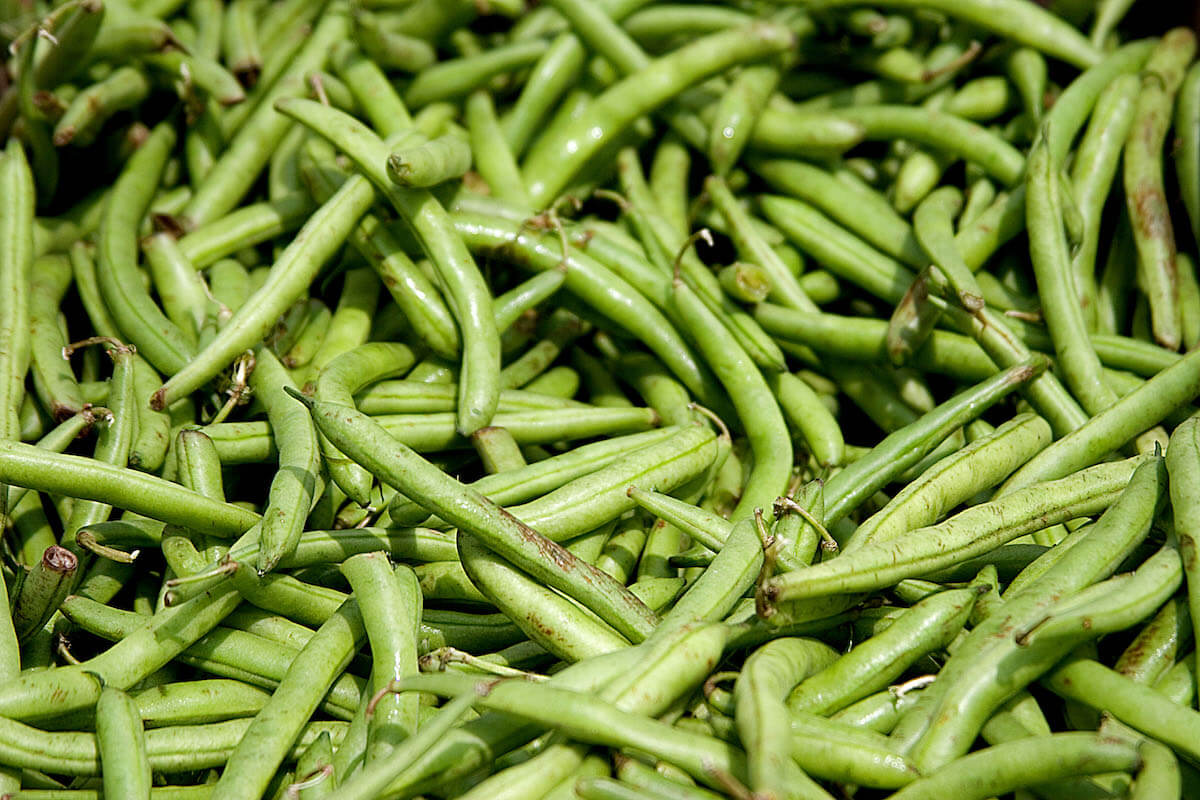Nothing says summer quite like the refreshing crunch and snap of a green bean on a hot day. These legumes—also known as string beans—are classics in all kinds of recipes from the infamous green bean casserole to char-grilled with butter and lemon. People who hated green beans like grandma used to make them (out of a can) fall in love when they try garden-fresh beans.
Green beans can be expensive at the farmers market because they take a lot of labor to harvest per pound, but luckily green beans are easy and fast to grow! Here are some tips and tricks for getting started growing green beans.
Bush Beans Vs. Pole Beans
One of my favorite parts of the growing season is going through seed catalogs in the winter and dreaming of my garden.
There are two categories of green beans—bush beans and pole beans. Like the names suggest, bush beans are determinate—once they reach a certain size, they stop growing. Although, they will continue producing beans throughout the season.

Pole beans are long-running beans, and they need to be trellised for maximum production potential. They won’t stop growing until the end of the season. While pole beans are more work, they have the advantage of being easier on your back during harvest. Also, some varieties of pole bean are just too delicious and beautiful to give up, like a personal favorite of mine, the scarlet runner bean.

There’s a reason Jack climbed a beanstalk to kill the giant; these plants are hardy and vigorous. But even with a sturdy crop, it’s always best to look for varieties that are well-adapted to your area. Ask farmers at your local market what varieties they are growing. Be sure to place your orders to seed companies early in the season, because companies sometimes run out of popular varieties by mid-spring.
Starting Green Bean Seeds
Beans are hardy, easy-to-handle seeds with a short growing season, which means that in almost all climates you can direct seed them after the temperature has risen above 60 degrees Fahrenheit with no problems. They take a little less than two months to mature. Follow the seeding directions on the seed packet for spacing and depth, since the planting spacing varies greatly by variety.
To get a head start on the seasons, you can start seeds indoors two to three weeks before the last frost. Transplanted beans can be put out before temperatures reach 60 degrees.
To get a bigger crop, you can add something called inoculant to the seeds. This is a powdery mixture that contains bacteria that help legumes fix nitrogen in their roots. The bacteria are naturally occurring in soil and will have especially strong populations where legumes have been grown regularly before.
When you’re planting beans, peas, or other legumes in new soil, it will make a big difference to fertility and productivity to use inoculant. You can order it online or buy it at a large farm and garden store. Not all places carry it since it is a little specialized. Again, follow the directions on the packet for application and be sure to plant the seed directly after inoculating.
Growing Green Beans
Before planting or transplanting, get to know your soil. Green beans like well-drained soils high in organic matter, with a pH above 6.

Beans are actually incredibly easy to grow. When first planted, beans will have to be weeded, but they quickly grow to out-compete weeds and shouldn’t require much weeding maintenance throughout the growing season.
They like regular watering. On a warm day, you may want to water more than once, so a sprinkler or drip system is helpful and takes less time out of your day. If you irrigate just once, do it in the evening to prevent moisture loss to evaporation.
Troubleshooting Pests And Diseases
Green beans are susceptible to a number of bacterial and fungal infections like rust and blight, many of which thrive in damp conditions, as well as the viral bean mosaic. Symptoms of these diseases include pale or brown spots on beans and leaves, wilting and browning leaves, or dusty-white mildew. It is common to see a few spots of rust (causing bronze-colored dots on beans), and it isn’t harmful to eat a slightly infected bean.
Crop rotation is the most effective method of preventing most of these diseases. Up to four years between plantings of legumes can be helpful in reducing pathogen pressure. Some varieties of bean have been bred for greater disease resistance also, so if you have persistent problems, consider changing what you are growing.
While green beans don’t attract a large number of pests relative to some of the other plants in the garden, the new shoots or transplants can be particularly vulnerable. Aphids, lovers of all legumes, are a common culprit. Some organic tips for pest control include planting seedlings instead of seeds, because transplants are hardier; using row-cover as a barrier between the plants and the soil; and staying on top of weeding so that weeds don’t harbor pests.
If you are still struggling with pest problems, I have had success with an organic spray made from tomato leaves and jalapenos in controlling aphids. Chop a cup of tomato leaves and half a cup of diced jalapeno peppers and combine with a pint of water on the stove. Bring to a boil and let sit overnight. Strain out the green matter and put the liquid in a spray bottle. Use liberally. For a more professional remedy, most organic farmers use a pesticide made from chrysanthemums. Always use protective gear when applying pesticides—just because it’s organic doesn’t mean it’s not toxic.
Harvesting Green Beans
Most varieties of green bean produce continuously over a period of several weeks. The more you keep up with picking the bean pods, the longer and more vigorously the plants will produce, just like dead-heading ornamental flowers.
Green beans are easy to hand-harvest. Just snap them off at the base and throw them in a bin. If you are harvesting in the heat of the day, use a cool water bath or rinse to bring down the temperature of the beans before storing them. This will help prevent spoilage.
Store green beans in the refrigerator for up to two weeks.
Blanched Green Beans With Almonds
Ingredients
- 1 pound green beans
- 1 cup slivered almonds, raw or toasted according to taste
- 1 tablespoon olive oil
- Salt to taste
Directions
I didn’t grow up with green bean casseroles. Instead, my mother made a simple but elegant dish that could be dressed up with various sauces.
- Take the tips off the green beans while a large shallow pan of water heats to a boil.
- Immerse the green beans in the water for about 30 seconds or until the beans turn bright green.
- Pour off the water
- Add the almond slivers, olive oil, and salt, then toss and serve hot or refrigerate until it’s the temperature you prefer.
This recipe can be spruced up with a simple balsamic reduction drizzle, a bit of honey, or a hollandaise sauce.
If you double or triple this recipe (or don’t have a very large pot), cook the green beans in batches. After each batch is cooked, drain the water and immerse the cooked beans in cold water to stop them from continuing to cook.
Related Post: Growing Black Beans
Green beans are a productive and easy staple to grow fresh from your kitchen. If you need more support, always remember to ask other gardeners, local experts, farmers at the market, specialists at your county extension or members of your local master gardener program. As always, when we are farming or gardening, the most important thing we are cultivating is community.










































Leave a Reply